There is an opinion among parents that children like everything bright and catchy - and therefore they often try to use the most incredible color combinations for children's rooms. At the same time, few people think about their psychological impact on the child. And in vain: children have the same perception as adults.
If we are annoyed by a flashy color, as well as too gloomy - or vice versa, a sterile white interior, then the child will feel the same. He can even be much more sensitive - unless he can explain it.
Well, since the color of the children's room affects the emotional state of the child, the task of parents is to make staying in it as comfortable as possible. We hope that the instructions below will help you understand this issue.
Fairy of colors
Decorating even a non-residential interior, designers are always guided by the psychological perception of color by a person:
- The fact is that some shades increase overall activity, others stimulate the work of thought, some of them are calming, and some are annoying. It is also interesting that even the most seemingly unacceptable color for a child, in certain proportions, can create harmony.
- If all this is relevant for adults, then why should one be guided by some other principles when determining the colors of a children's room? By choosing the right colors, parents can balance the emotions of the baby, smooth out his problems, help him develop harmoniously, and feel comfortable.
- Arguing about what colors are suitable for a children's room, it cannot be said unequivocally that this color is good and this one is bad. Despite the fact that the rainbow has only seven colors, each of them has many shades. There will always be one that fits perfectly into the interior - the main thing is what it is combined with and in what quantity it is dosed.
Note! To decorate a room in military style, it is not at all necessary to paint the walls in green-brown shades - it is enough to sew bedspreads and curtains from the appropriate fabric, use photo wallpapers with the corresponding plot in the decoration of the wall or door leaf (see).
This is quite convenient for parents, since the price of the material is low, and there is no need to repaint the room when the child grows up. These or other shades of green can harmoniously fit into almost any children's interior. Many examples have been presented above, and will also be found further.
Below are the most interesting combinations, provided that the shade of green is the main one:
Blue and cyan
About of blue color psychologists say that, like green, it calms and relaxes. However, you need to remember that blue is a cool color, so you need to use it in the interior with caution. And in such a situation, when there is a lack of natural light in the room (see), it should not be used at all.
But bright rooms blue just transforms. By the way, in countries with a hot climate, this color is a priority, as it visually makes the interior cooler. In addition to classic blue, shades such as cobalt, azure, sky blue have this effect. Hence the marine style of interior design so beloved by many people.
But most often, blue color appears in children's interiors (see). Usually these are ceilings that are stylized as the sky and clouds. Many people think that the blue scale is good only for rooms intended for boys. But this is far from true. Rooms for girls look just as harmonious - especially if their interiors are diluted with white, pink, lilac.
Violet
The last in the list of primary colors of the rainbow is purple. It has only 11 shades, and as many more that can be considered transitional between purple and red. For example, hot pink, purple, cherry, can be equally well attributed to both spectra.
- Child psychologists treat purple hues with extreme caution, since this color has both positive and negative qualities. For example: it not only improves mental activity, but also scatters attention.
- And in general, the purple color - or rather, its abundance, is perceived by the child as something fantastic. makes him feel lonely.
- Therefore, the best application for juicy purple shades is the creation of accents.
You can see examples of such use in the photo examples presented below.
Children's room, as a rule, is a small state of the child, where the main thing is only the baby himself.
Children are more sensitive to different shades in the interior, so the right combination of colors in the interior of the nursery can contribute to the correct and quick thinking and development of the child.

It is important to create a cozy and not annoying atmosphere, otherwise the child will be uncomfortable in it.
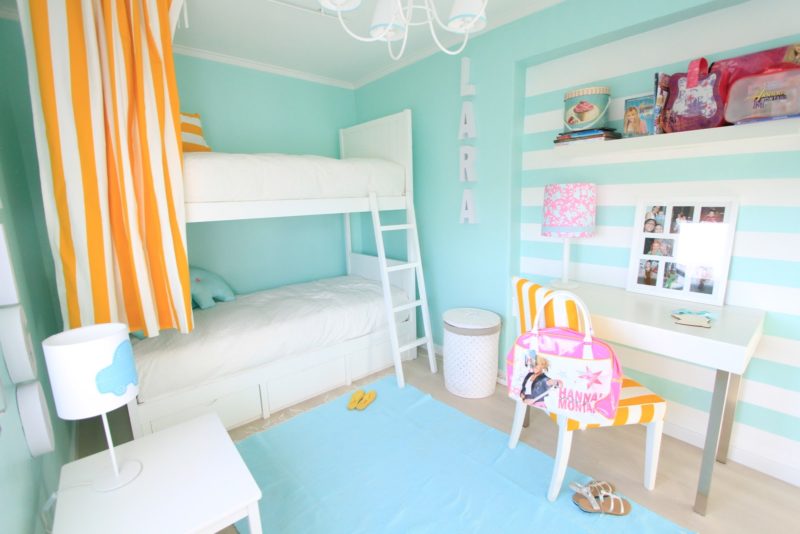
Criteria for color combinations in the children's room
There are three criteria that will help determine the interior and choose the right color for the children's room.
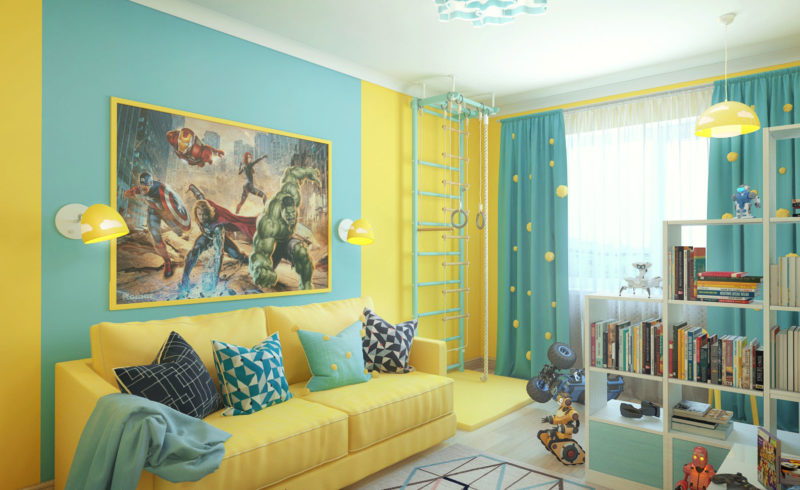
The first criterion is the age of the baby, since there are certain pleasant colors for each age. Bed togas are more suitable for a newborn’s room, but bright colors are more suitable for a five-year-old child.
At this age, children love all the brightest, so you should avoid bright hues.
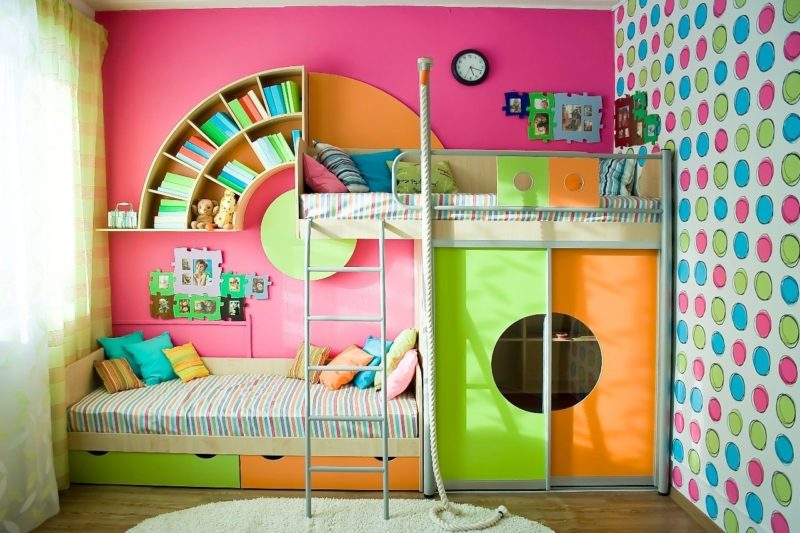
The second criterion is the character of the boy or girl. If your child is calm, without any long outbursts of emotion, then you can add something red or orange to the interior.
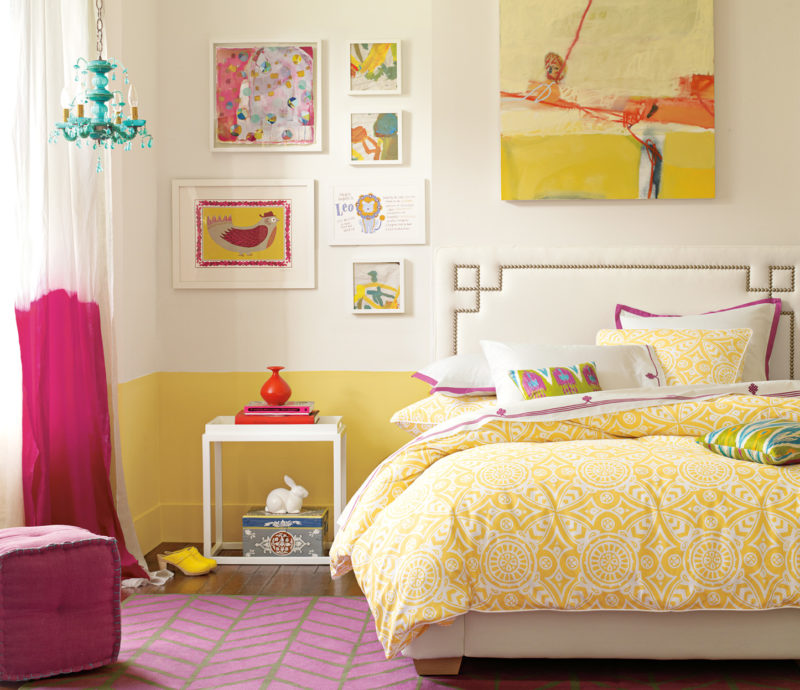
If the baby is part of a fidget group, which means it is very active, then it is necessary to include more soothing tones in the interior, for example, light blue or yellow.

The third criterion is the preferences of the baby himself. When choosing a combination of colors in the interior of a nursery, be sure to consult, since from the age of 4 they will be able to choose the perfect interior with your help.

A photo of the combination of colors in the children's room can be seen in the image, where you can clearly see what happens when you combine some colors.


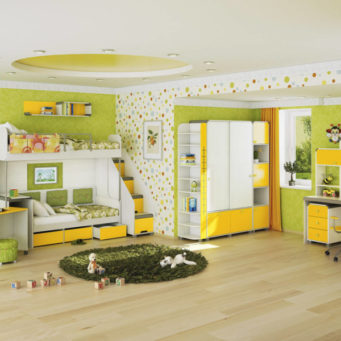


The combination of tones in the interior
Every little thing is important in the color scheme of the children's room. It is important what color the curtains, furniture, decorations will be.
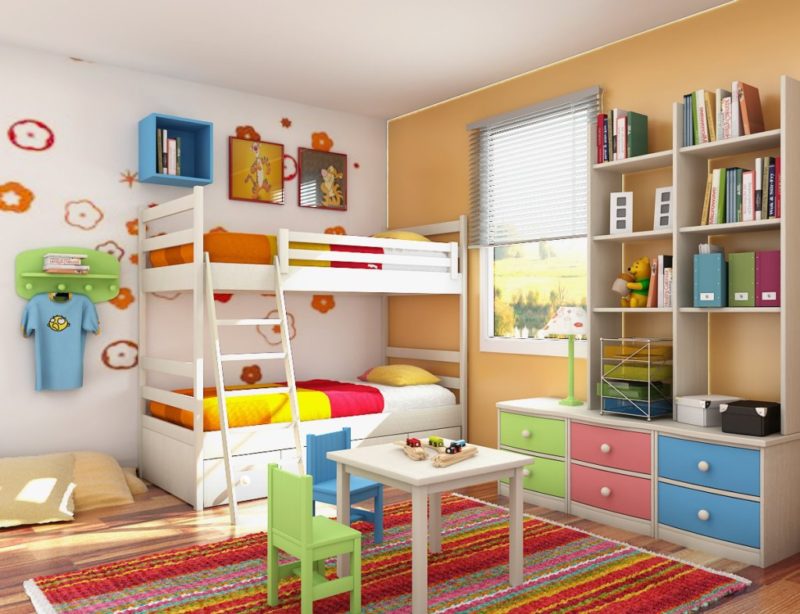
And also you can not ignore the curtains, bedspreads and shelves. If you correctly combine all the shades in the interior, with respect to wallpaper and furniture, then you can set the child in a certain way.

In a combination of colors, it is necessary to find a middle ground, since, as psychologists say, too bright shades negatively affect the development of the baby, as well as completely dull tones.

If the interior colors are too bright, then the child in such a room will quickly get tired, but if the tones are completely dull, then the child will most likely be lethargic, so choose the tones of the golden mean.

Color matters
It has long been proven by scientists that the emotional state of a person directly depends on the color scheme of the room in which the child is located.
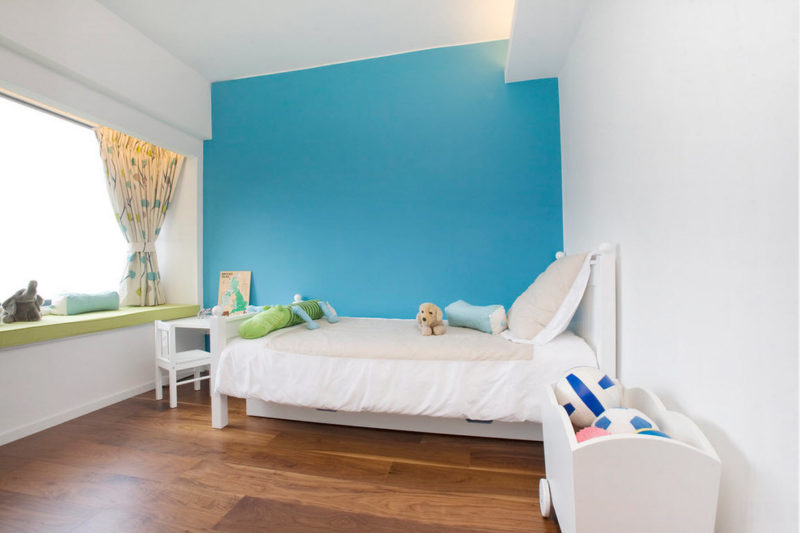
Yellow tint; good for the development of intelligence and intuition. It is worth noting that the eyes will be very tired from the yellow color, so this shade is only suitable as an auxiliary.


Red; popular are those that excite the psyche, and also increase mental activity and pressure !!! There should be a minimum of red in the room, otherwise the child will have restless sleep or insomnia.

Blue colour; has a relaxing and calming effect, to the extent that it slows down the heartbeat. This shade is more suitable for the play area, but not for the work area, since the blue color tends to slow down the development of the child, and there is also a risk that the child will develop depression.

Orange; too much orange in the interior can lead to dizziness. It will be enough if you put a couple of toys of this color on a shelf in the room, this helps to increase appetite and cause creative activity.

Green; ideal for calming the nervous system. Excellent effect on vision, as it is very pleasing to the eyes. The presence of green in the interior only positively affects the resident of the children's room, bringing him peace and tranquility.

Violet; great color to enhance the imagination. Psychologists categorically do not recommend using this color in a nursery, as it provokes loneliness. If you chose this particular shade, then rather it needs to be diluted with other tones, or use only the most light colors green.


Ideal color options in children's rooms. When choosing shades for a children's room, you need to pay attention to the fact that they cheer up the baby, but also visually refresh the room.

For such cases, shades such as pale blue, pale green and pastel colors are suitable.

If you decide to still wallpaper or just paint the walls, then it is a great idea to use two or more colors. Combinations of several types of colors can achieve a certain style, for example: a combination of a light blue hue with yellow tones can give a more nautical style.
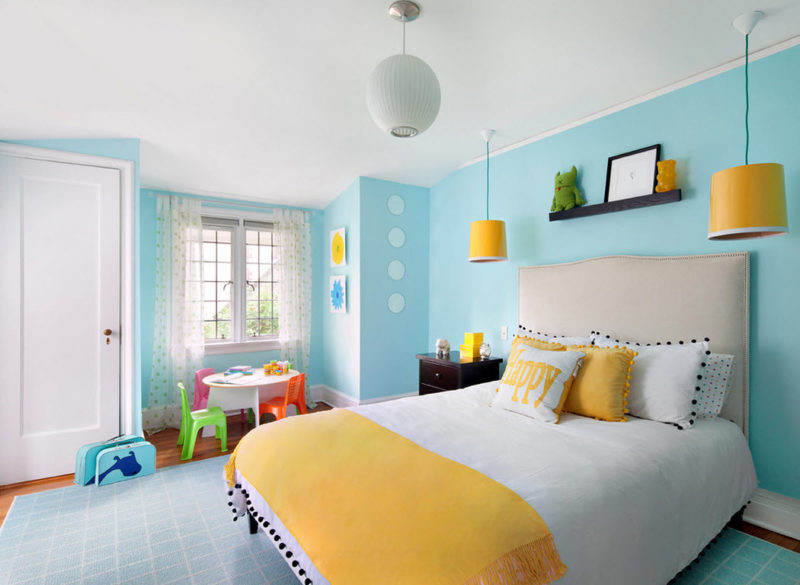
If the furniture and walls in the room are the same color, then this will only make the room spectacular. When it comes to girls' room design, they tend to go with more pink tones paired with blue or light blue, for example.

If the girl is already big, then you should choose the color scheme together with her. As usual, the walls are decorated with drawings and images of flowers, fairytale heroes or images of nature.

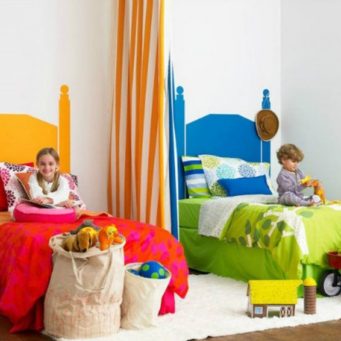
Photo of the perfect combination of colors in the nursery


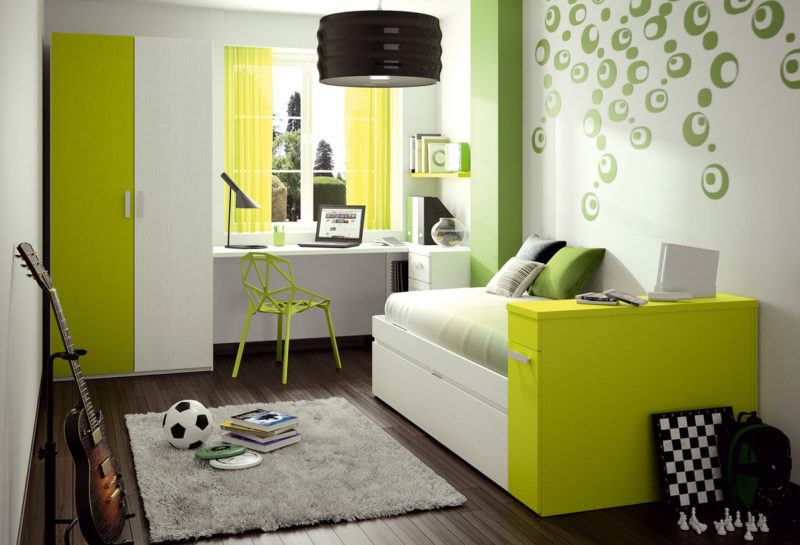


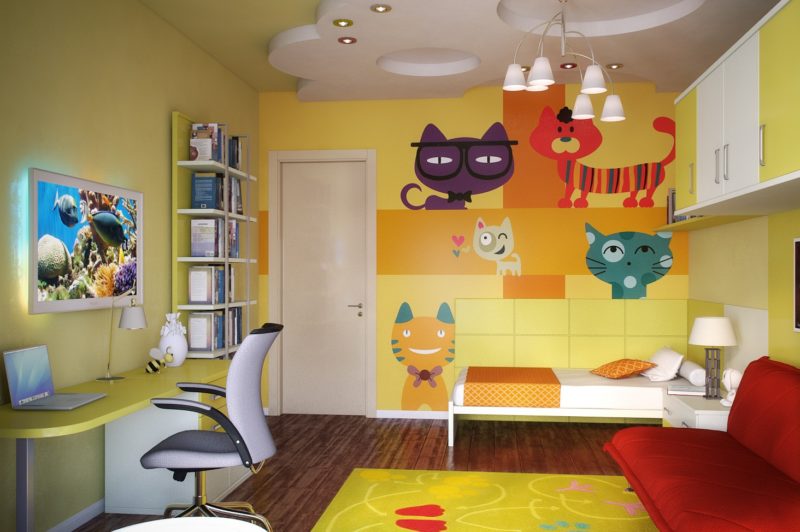
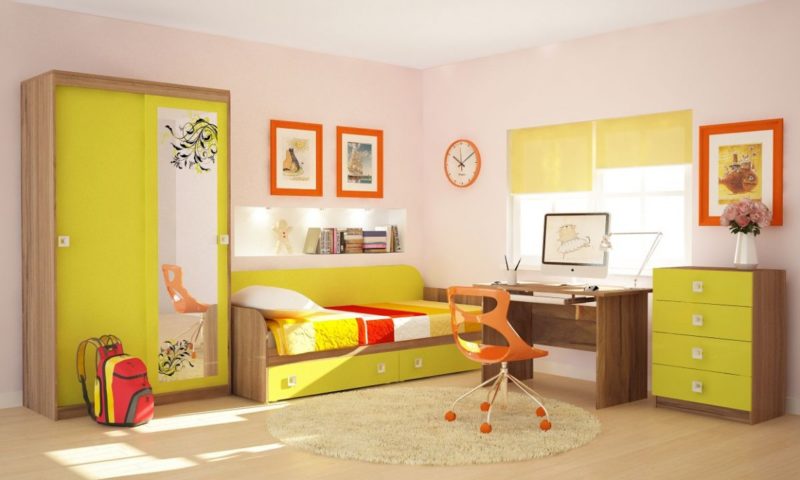
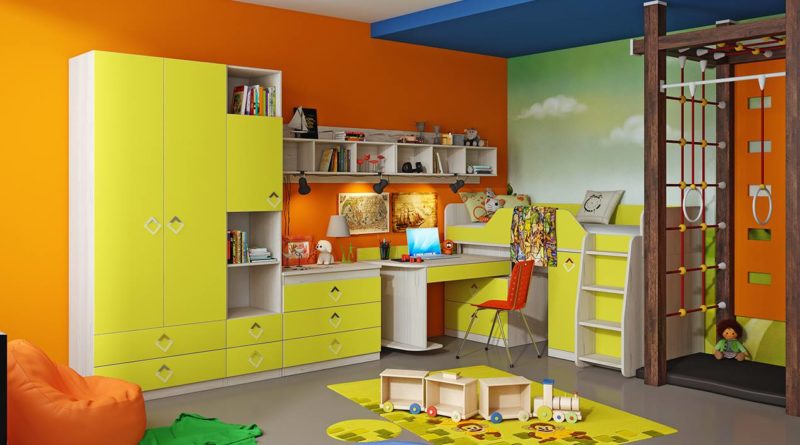








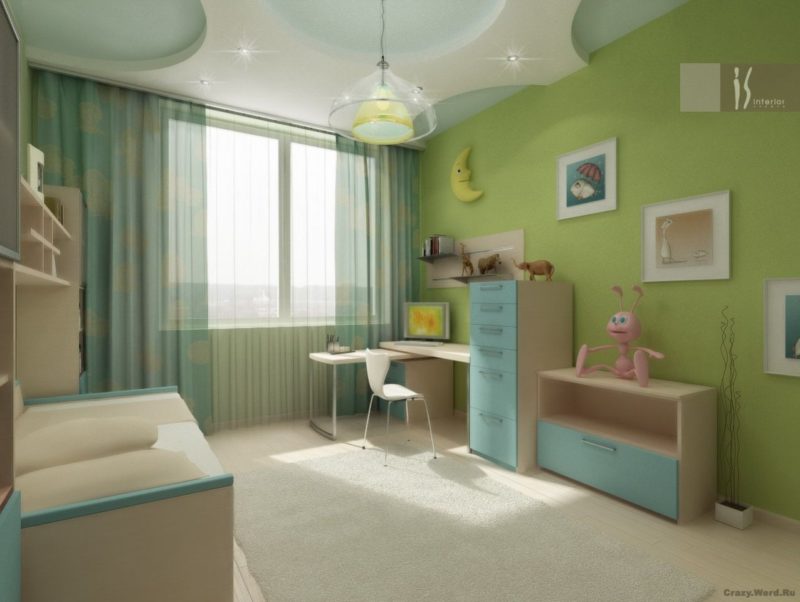

Psychologists say that human thinking is directly related to the development of visual perception: the finer this perception, the more shades the human eye distinguishes, the more perfect the human brain.
Psychologists advise to surround a baby of the first two years of life only with soft, desaturated colors; when he grows up, the nursery, on the contrary, may well become the brightest, most colorful and cheerful room in the house.
The baby's room should be soft and cozy, in calm, restrained colors. For example, it can be a combination of warm shades of blue combined with pastel yellow, which create a feeling of security and comfort. Cheerful and cheerful can make a room children's furniture painted in similar color combinations. In such an environment, the baby will be able to fully play, learn and relax.
Psychologists believe that starting from the fourth year of life, the baby begins to give preference to contrasting and cheerful colors - pure yellow, red, blue. At this time, it is very important to use pure colors in the design of the nursery, as such colors create a sunny and mobile atmosphere in the children's bedroom and playroom.
Dark shades of spectral colors are undesirable for decorating a nursery, because the closer to black a shade of any color is, the more depressing effect it has on a person. Light shades, on the contrary, evoke positive emotions, correspond to development, youth, strength. Scientists have found that a good, high spirits can be created using ivory - light with golden hue, and the pale blue color of the walls normalizes blood pressure and improves the general condition.
Interesting solution- two-tone walls. For example, a combination of light yellow and light blue, but not monochromatic, but with small spots interspersed with a different shade of the same color: this “breaks” the monotony of color and gives the wall a picturesque look that is pleasing to the eye.
It is very important to choose the right shade of color. Often for a girl's room, parents pick up a warm color scheme, in pinkish tones, for the boy's room - more "cool" color combinations, shades of blue. However, experts do not consider these color preferences a mandatory rule. They only recommend taking into account the impact of colors and shades on the emotional, psychological, and sometimes physical state of a person, which has already been mentioned earlier. 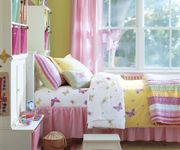 Psychologists recommend solving the interior of a children's room in gentle and pure colors: pinkish, greenish-yellowish, light blue, light green. Pastel shades they create harmony in the nursery, they help to make even a dark room more cheerful and comfortable, to create a lively atmosphere in it, very different from the regularity of "adult" rooms. You can make a nursery interesting and comfortable using a small number of shades - for example, in beige and light lilac tones with the addition of brown.
Psychologists recommend solving the interior of a children's room in gentle and pure colors: pinkish, greenish-yellowish, light blue, light green. Pastel shades they create harmony in the nursery, they help to make even a dark room more cheerful and comfortable, to create a lively atmosphere in it, very different from the regularity of "adult" rooms. You can make a nursery interesting and comfortable using a small number of shades - for example, in beige and light lilac tones with the addition of brown.
Some experts argue that a very light shade of purple is well suited for a schoolchild's room, as it gives a positive creative impulse and stimulates mental activity. Pastel colors are especially preferred for newborns and infants. Delicate shades of pink, for example, reduce excitement, pleasantly lull.
The walls of the nursery can be decorated with multi-colored bright drawings: flowers, butterflies, animals that develop the child's imagination and curiosity. Light bright contrasting toys can be hung from the ceiling to attract the attention of the child.
At the same time, psychologists and designers do not recommend using a lot of bright colors at the same time so that the room does not become clumsy. Parents should be especially careful when using intense red and orange tones, as their abundance can irritate the child.
When choosing the main color for the nursery, the temperament of the baby who settles in it is also important. For example, in the design of a room for a small phlegmatic or melancholic person, you can use separate, but small, objects of bright red color that stand out with colored “spots”, or paste over the walls with soft pink wallpaper. Such a background and bright red spots will moderately stimulate the activity of the child and increase his immunity.
A gentle blue-blue background will be appropriate in the room of a restless baby - a choleric or an overly excitable sanguine person with an "explosive" temperament. It is also believed that all shades of blue have the ability to strengthen the child's body and stimulate its development. But in a nursery with orange walls, curtains and a mass of colorful toys, on the contrary, it will be very difficult for such an active child to become a “good boy”, finish the game on time and go to bed, since the abundance of bright orange tones has an exciting effect on the psyche.
Many psychologists advise parents who choose the color scheme for the room of their beloved baby, be sure to find out his opinion: ask what color he likes himself, because color preferences reflect the emotional needs of a person, and personal color scale can be considered to a certain extent as an expression of individuality.
Red color |
It negatively affects the psyche of the child: they excite it, while, as a rule, blood pressure rises and the risk of headaches and nightmares increases. |
Blue colour |
|
Yellow |
Absolutely positively affects all aspects of a child's life. This is a great color for decorating a baby's room. It activates the activity of the brain, improves mood, increases the speed of perception, visual acuity. And it is contraindicated only in cases where the child is prone to overexcitation or neuralgia. |
Increases visual acuity. In addition, it contributes to the normalization of blood and eye pressure, stabilizes the pulse and respiration, and also helps to concentrate, good mood, has a beneficial effect on insomnia. That is why in the past, working (writing) tables were usually covered with green cloth, and the table lamp had a green lampshade! Drawings, toys and book covers in green colors are exactly what your child needs. |
When decorating a room, we base our color choices on our preferences and while it's normal that most of the time choosing a color isn't exactly an easy process. Each color has different effects on the human body and mind, and it's important to take this into account, especially when you're designing a child's room. After all, you want to do the best for your child. In this article, we will try to figure out how color affects the development and behavior of your child and find the best color for a child's room.
How color affects Warm colors.
Warm colors tend to stimulate the mind and energize the body. Warm colors make large spaces feel more inviting and inviting. However, the warm color isn't particularly relaxing, so it's not great for sleeping, especially for very energetic kids. 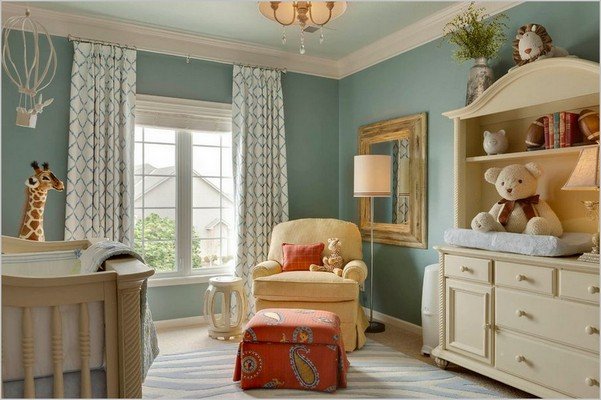
Orange.
Warm, cozy, orange is a stimulating color that inspires interaction and communication. However, too much orange, especially if it's a bold shade, can be overly exciting in a child's room. 
Yellow.
Yellow is a cheerful and energetic color that gives the room a sunny and bright look. This color is associated with happiness. Depending on the hue and intensity, gentle yellow stimulates concentration while brighter hues can stimulate memory. 

Red.
Red is one of the colors that are not recommended for a child's room due to the fact that red is associated with aggression, inability to concentrate and headaches. Of course, this only happens if you use red in excess. When used properly, red can actually have good effects such as energizing the body and increasing athletic ability. 
Pink.
This versatile color is associated with girly things and princesses, and for good reason. Pink is soothing and relaxing, and evokes femininity and sympathy. Initially, pink has a calming effect, but be aware that this can lead to anxiety and anxiety, so it's not a good idea to decorate the entire nursery with pink. ![]()

How color affects Cold colors.
Compared to warm colors, cool tones tend to have a calming effect on the body and mind. With cool colors, the room becomes more spacious and relaxing. Dark shades, however, should be used in moderation so as not to create a gloomy atmosphere. 
Blue.
A white and blue combo is a great choice if you want to create a soothing and calm décor. Blue is the opposite of red, it has a calming effect, lowers blood pressure and reduces anxiety and aggression.
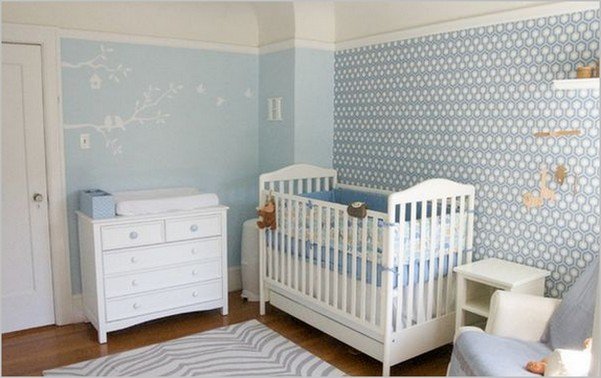
Blue, a good choice colors if you want to create a cool atmosphere in a hot and humid place. Some shades of blue, such as gray blues, can create a very sad environment.
Green.
Green is a common color in nature, so use that as inspiration. Green is associated with nature and symbolizes health and well-being. Green has a calming effect on the body, improves concentration, and some studies show that it can even increase reading ability. All this makes green the best color for a learning atmosphere. 
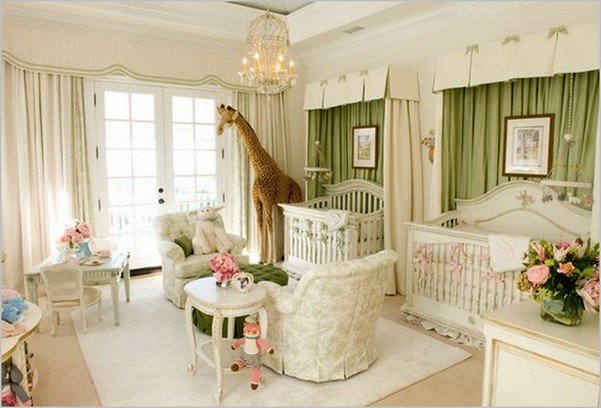
Violet.
Purple looks glamorous and mysterious, ideal if you want to create an intricate design. Purple is associated with luxury, but also with wisdom and spirituality. Pastel shades of lilac and lavender are soothing and create a serene atmosphere.


White.
Angelic and pure White color associated with innocence and contributes to a calm and fresh atmosphere. White is also associated with secrecy, modern color so it's best to add a splash of bright color to evoke openness. 

Grey.
Even though grey colour can be perceived as a gloomy, sad and overcast color, it also evokes other emotions. For example, gray inspires you to contemplate and thus has a calming and relaxing effect. However, gray mostly contributes to loneliness, so use it in combination with warm tones and bright colors.

Black.
Black is rarely used in children's rooms. This is because black is the color to use in moderation. Black is a powerful color, it is better to use it if the room has large windows, a lot of natural light, and only in combination with contrasting shades. 
Brown.
Earthy, warm and grounded, brown is a great color for a child's room. However, try to use either dark brown or light beige so as not to create an unpleasant style due to associations with ugly things. 
I hope you figured it out how color affects per child, and choose the most suitable option for your child's children's room. And if you still have doubts about which color is better, then get acquainted with the book by designer Elena Romanova “How easy it is to find color solution interior for your apartment
An individual approach to choosing a color is nowhere more relevant than in a nursery. When choosing a color palette for a children's room, remember that this room is not a testing ground for design experiments, and children's perception of color has its own characteristics that need to be taken into account.
- 1 of 1
On the picture:
1. Get rid of stereotypes. The principle of "girls - pink, boys - blue and blue" simplifies the task for parents, but such "baby colors" are often completely unsuitable for the occupant of the room.
3. Consult with your child. From about three years old, the baby already has ideas about favorite colors, and his opinion should be taken into account. However, the last word should remain with the parents: at a young age, taste preferences change rapidly.
In the photo: Alphabet P180501-6 wallpaper from Mr Perswall.
2. Focus on the temperament of the child. It is believed that for a temperamental "give" you need to choose a bright color palette. In fact, everything is exactly the opposite: sonorous, saturated colors for a nursery will “recharge” a passive and slow child, and for a hyperactive child, a “pacifying”, pastel or neutral range is needed.
4. Give preference to light shades of color. Children feel more comfortable in bright rooms. The optimal children's colors are “light”, light tones of the main spectrum. They are unobtrusive, create a good background for bright toys and accessories (curtains, pillows, rugs, furnishings).
5. Be careful with achromatic scale. It is white and all shades of gray up to black. It is better not to use them in their “pure” form: children need positive emotions, and they are set by other colors and color combinations. Rigid contrasts of white and black cause psychological stress. But light curly patterns in achromatic colors or a smoothly painted white or gray section of the wall are a good backdrop for bright furniture, colored shelves, posters in a teenager's room.

- 1 of 2
On the picture:
Never design a nursery completely in gray tones. Shades of this color can only be used in combination with bright objects, details and materials.
6. Pay attention to color combinations. The “optimal” combination of complementary colors with the same saturation has an irritating effect on the child. For an additional color, choose a lighter and paler shade, for example, complement the juicy color of spring grass with a bleached red or light orange.
8. Consider the effects of artificial lighting. This is especially important when choosing bright colors. Check in advance how much the color intensity will increase, especially at eye level, when turned on ceiling light, sconce, floor lamp, night lamp.
Pictured: Evo CS/8014-T luminaire from Calligaris.
7. Avoid monotony. Zone the nursery with color. For the working area, an achromatic or cool range (blue, cyan and green) is suitable - both options will help you concentrate, and the latter will reduce eye fatigue; for a sports or play corner - a warm palette with bright accents, next to the bed - pastel.
9. Make sure that the colors do not dissonate. In the active child's room, two primary colors are enough, and one tone, because the colors for the nursery should not be variegated at all. You should avoid both “sharp” combinations, sometimes suitable for the living room (black with red irritates the nervous system), and colors that cause deep relaxation, successful in the bedrooms of adults (for example, purple and brown can act depressingly on a child).
10. Add white! It will help to “dilute” any palette, make other colors more expressive, create a feeling of airiness and fullness of light.

- 1 of 3
On the picture:
Keep white balance. This color creates a feeling of lightness, but against the background of white walls, do not forget to make more bright color spots.
13. Leave room for drawing. For a young "artist" you can paint one of the walls (or wall) white water-based paint, or apply special black paint for blackboards to a fragment of the wall (it is convenient to draw on such a coating with colored crayons). Both options go well with any color scheme.
In the photo: a nursery from a project implemented by designers Lyudmila Krishtaleva and Oksana Panfilova.
11. Take note of the drawing. Sometimes even a not very catchy combination looks annoying due to an obsessive ornament or pattern on fabrics or wallpaper. Patterns should not be too large, annoyingly "cling" to the eye.
12. Match tastes. If the nursery is intended for two children with different tastes, choose harmonious combinations so that in the personal area of \u200b\u200beach child ( workplace, sleep zone) accents were placed on favorite colors. Or use one "individual" color in each child's "personal" area (for example, one is green, the other is red) with an overall achromatic gamut that will unify the color schemes.
14. Get ready for change. The child grows, and his tastes and needs change with him, and sometimes very rapidly. What a younger student liked may not suit a teenager at all. Taking into account the perspective, the walls of the nursery can be pasted over with wallpaper for painting: the color palette will be easy to change.

- 1 of 3
On the picture:
When designing a nursery, consider the tastes and interests of the child. But remember that they can change with age. Too expressive interior quickly gets bored, too calm can get bored.


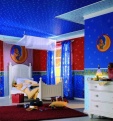 Acts positively. Despite the debilitating effect on
Acts positively. Despite the debilitating effect on 

















